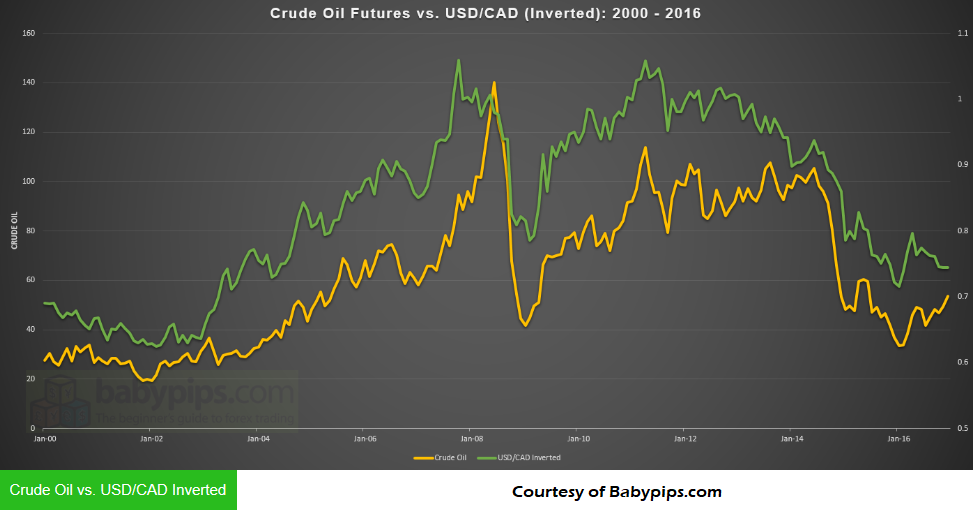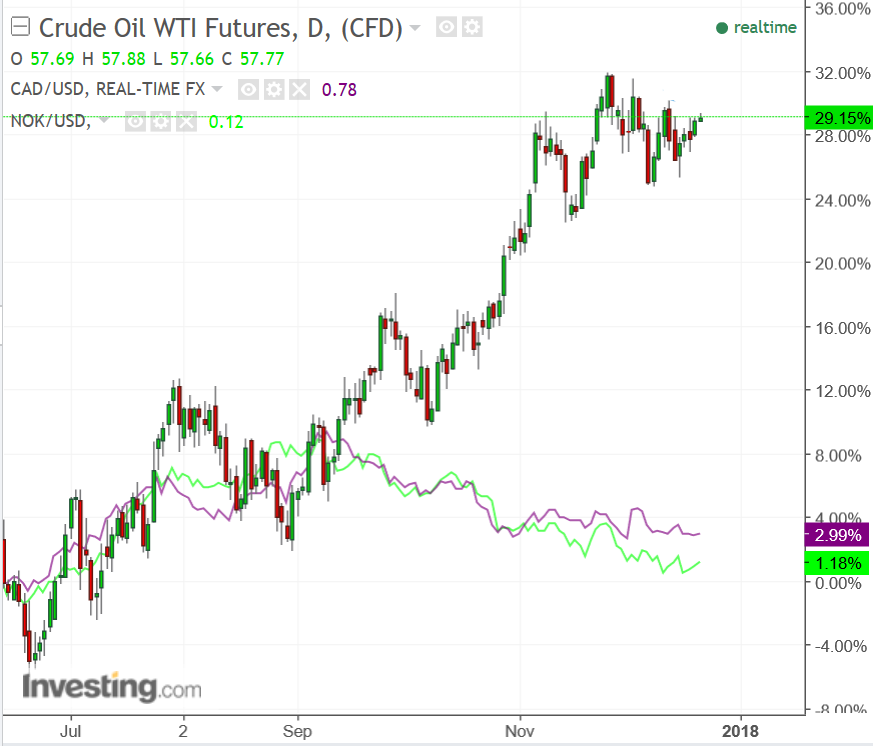Here’s Why the Relationship Between Oil and the Canadian Dollar has Broken Down

The CAD is no longer influenced by oil prices in the way it once was, neither is the NOK. Why has the relationship between “black gold” and FX changed?
Until recently the Canadian Dollar would rise and fall in alongside oil prices. It would reliably follow the price of oil in the same way that water can be relied upon to boil at 100 degrees centigrade.
The reason was simple. Canada's biggest export is oil so when the price of oil went up, investors would bet on higher prices delivering a boost to the Canadian economy.
This trend was especially apparent in the USD/CAD rate, which traders used as a proxy for placing bets on the oil price because the US was far and away Canada's biggest oil customer.

Above: Chart showing crude oil futures and USD/CAD prices.
But just as the relationship between water and its boiling point isn't quite that simple (it varies according to altitude), neither is the affair between the loonie and oil.
Analysts have noted, particularly of late, how the relationship has been breaking down - or as ING's Viraj Patel puts it, losing some of its "oiliness".
The chart below shows how oil price changes since June 2017 have compared with the exchange rate for CAD/USD and NOK/USD.

Above: Chart showing WTI Crude Oil futures and the CAD/USD and NOK/USD exchange rates.
Note how on the far left, back in the summer, both prices moved nicely in tandem only to break down spectacularly in September when oil took a hike, leaving the two currencies behind.
The crocodile jaw divergence suggests we can no longer rely on oil as an indicator of where these currencies will go, but why is this? Viraj Patel, a strategist at ING Group, argues a range of factors are behind this change.
The first of these is to do with the root cause behind the recent rise in oil prices, which have been driven almost exclusively by OPEC policies rather than organic changes in supply and demand.
OPEC - the Organization of Petroleum Exporting Countries - has effectively manipulated the market for oil by artificially restraining supply growth, which has pushed up prices.
Patel also notes how monetary policy has taken over as the primary driver of the Loonie, relegating oil prices to second place as an influence on the currency.
Interest rates are the primary driver of currencies because they attract greater inflows of foreign capital, which seeks to exploit higher relative returns or, simply, rising returns.
The Bank of Canada (BOC) has raised interest rates twice in 2017, lifting the cash rate from 0.5% to 1.0%. This and subsequent statements have been more important for the CAD than the rise of oil prices.
In addition, Canada is trying to diversify its economy away from its reliance on oil and into a more balanced mix of exports and industries.
"To avoid another Dutch Disease, countries like Canada have been diversifying their export base - meaning the influence of any single commodity has been waning," Patel notes.
USD: A Petrodollar in the Making?
Looking at the problem from the other side of the Canadian border, the reverse has been true, with the US currency recently becoming more sensitive to oil prices.
The Dollar’s relationship with oil has completely reversed, by 180-degrees. Where it previously has a negative correlation with oil prices, it now has a high positive correlation.
"The USD has started to trade like an oil currency shifting away from a previous relationship seeing the USD and oil in an inverse relationship," says Hans Redeker, global head of FX strategy at Morgan Stanley.
This is because the US has become the main "swing" factor influencing oil prices, due to an increase in domestic shale production.
Higher shale output also means the US is importing less oil from Canada and elsewhere, which adds to the petrocurrency effect.
Shale production itself is now equally as important for oil prices as anything that OPEC does.
The influence of US shale production on global oil prices was highlighted in an article written by Akin Oyedele, a reporter at Business Insider, back in the spring.
His article states the reason oil had struggled to climb above 50$ a barrel, despite OPEC's supply cuts, was down to increasing US inventory stockpiles.
Get up to 5% more foreign exchange by using a specialist provider by getting closer to the real market rate and avoid the gaping spreads charged by your bank for international payments. Learn more here.




